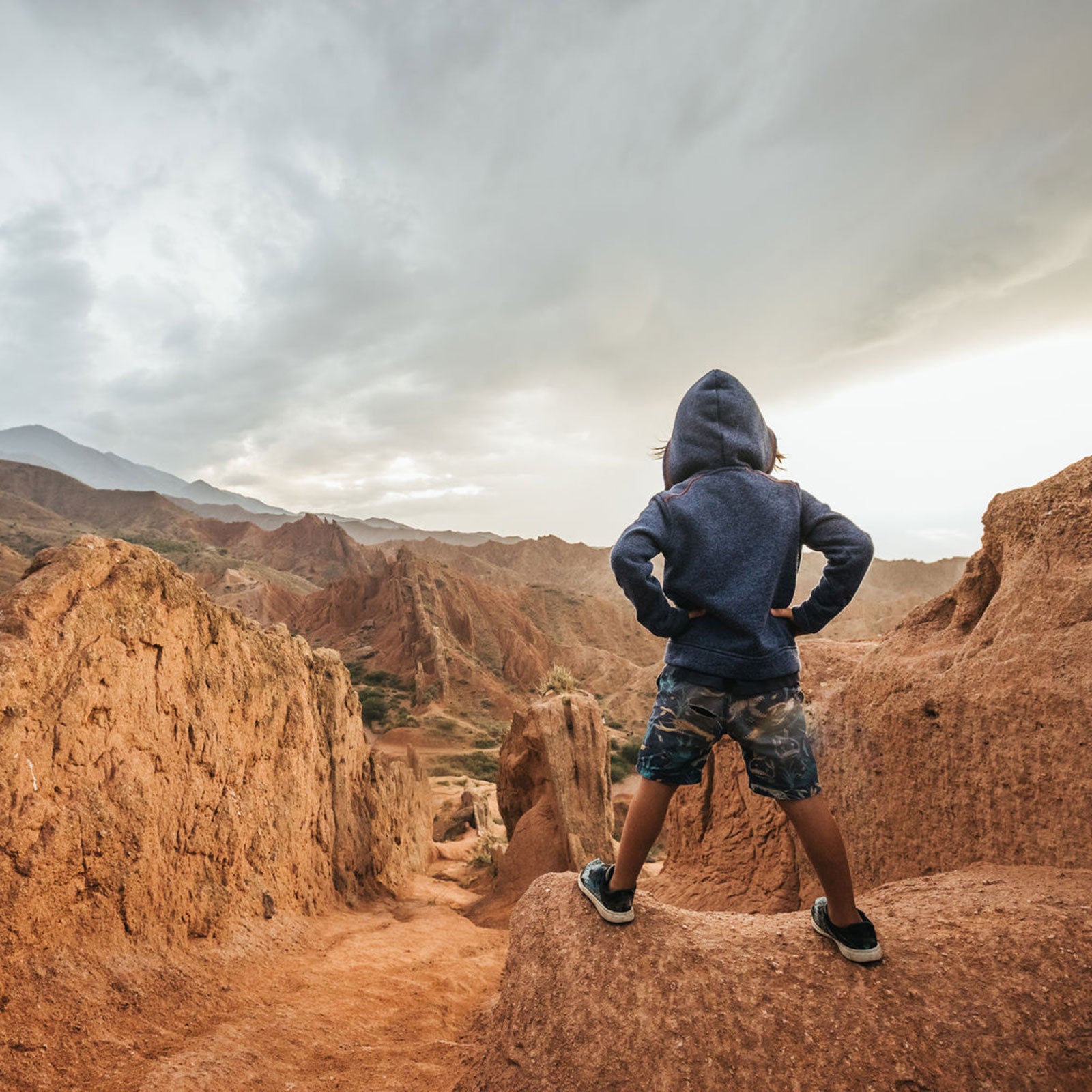The most pivotal experience of my adolescence was spending three days alone on an island off the coast of Maine with a tarp, a bag of trail mix, a sleeping bag, an apple, a sleeping pad, and plenty of water. My solo, at age 15, was part of a 21-day sea-kayaking and sailing course. I journaled, contemplated boredom, did many jumping jacks, and emerged with a sense of accomplishment and self-reliance that paved my way for a lifetime of outdoor adventure.
So naturally, I want to give my sons, who are nine and seven, similar opportunities to spend time alone outside, solve problems, and experience the world in its massiveness. But itÔÇÖs one thing to be an Outward Bound student; itÔÇÖs something else to be the responsible parent deciding how much independence to grant kids outside┬áand when. I reached out to Truckee, California, resident┬á, a raft guide turned doctor and the mother of four, for advice. She abides by four basic steps: teach, plan, supervise, and let go.
Teach
Before letting them run wild,┬áteach your kids basic safety rules, like what to avoid (open water or busy streets), how to assess their own skills, and what to do if they get into trouble. This is a lifelong process that is best begun in toddlerhood, says Anderson. ÔÇťI used to send my kids on ÔÇśexpedition missionsÔÇÖ as toddlers and preschoolers,ÔÇŁ she says. ÔÇťWeÔÇÖd be out on a trail, and I would send them off into the woods on an objective.ÔÇŁ
The mission could be gathering pine cones or rocks or counting birds. The point is to give the kids a task that they can do outside of your immediate purview. As your┬ákids get older, teach them how to navigate so you can trust that theyÔÇÖll be able to ride their bike or walk to a designated spot. Show your child┬áwhat youÔÇÖre doing and why. On the ski hill, let them pick the slopes. If youÔÇÖre camping, let them set up the tent. Hiking? Let them pick the route.
Plan
Come up with an oh-shit plan┬ájust for the adults.┬áAssess the potential danger of any given scenario, and identify how you would get out of it. (Broken arm at the crag? Map directions to the nearest doctor. Have a kid with food allergies? Stash the EpiPen in your pack.)┬áDonÔÇÖt tell the kids the plan, says AndersonÔÇöthis one is a backup. ÔÇťThe kids should feel as if theyÔÇÖre totally on their own in the wild, and you should have a general sense of where they are and whatÔÇÖs going on,ÔÇŁ she says. ÔÇťThey run wild and free, and IÔÇÖve identified potential problem spots and made a calculated risk as to what IÔÇÖm comfortable with and what IÔÇÖm not comfortable with.ÔÇŁ
Another important part of the plan is communicating with your kids, says Anderson. ÔÇťExplain, ÔÇśHere is the situation, and I want you to make good choices. This and that should be on your radar. HereÔÇÖs what you need to do.ÔÇÖ And then get confirmation that they understand,ÔÇŁ she says.
Supervise
Parents will have varying degrees┬áof risk acceptance. Anderson believes itÔÇÖs fine for your kids to experience natural consequencesÔÇöso long as they donÔÇÖt endure serious injury. If the kids are bouldering, for example, they might get themselves into a sticky situation high up on a rock ▓╣▓ď╗ň╠řneed a rescue. ThatÔÇÖs an acceptable risk. Sure, they might get scared, and there might be tears, but theyÔÇÖll learn a lot about their limits and how to take care of themselves. They will also know they can trust you to help them out when they need it.
ÔÇťYou have to be in a place where you can let your kids encounter problems and work through them,ÔÇŁ Anderson says. ÔÇťThe situation has to be safe enough so you can monitor without interfering unless you need to for their safety.ÔÇŁ
This problem-solving builds confidence and skills. ItÔÇÖs a positive-feedback loop: kids build upon knowledge and demonstrate their responsibility, and their parents become┬ámore and more comfortable granting them independence in the outdoors.
Let Go
ÔÇťKids are a lot tougher than we think they are,ÔÇŁ Anderson says. Trust they have learned the lessons youÔÇÖre imparting, and remember that their skill building is an iterative process. It can be harrowing to watch your offspring ski down a slope solo┬áfor the first time, with plans to meet for lunch, but instead of giving in to anxiety, reframe the situation in your mind. You are giving your kid the opportunity to be independent and deal with what comes their┬áway, even if that means getting lost and tracking down a ski patroller to help them return to their familiar meeting spot.
ÔÇťIf you donÔÇÖt let them make choices by themselves, kids donÔÇÖt get the chance to learn and to depend on themselves,ÔÇŁ Anderson says. ÔÇťThe outdoors is a great classroom, and getting the chance to experience it on their own will make kids strongerÔÇöemotionally and physically.ÔÇŁ


